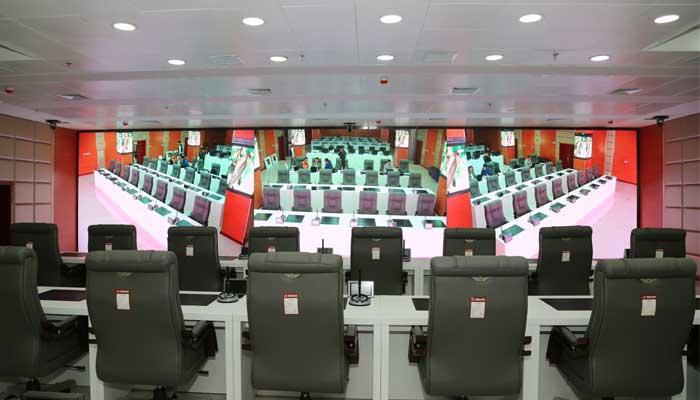As the mainstream product of display screen in outdoor market, full-color LED display screen is often used in competitions, concerts, squares and so on. So how to judge the quality of full-color LED display?

The quality of a full-color display can be signed from the following aspects:
1. flatness
The surface smoothness of the display screen should be within (+1 mm) to ensure that the display image does not distort. Local protrusion or concavity will lead to dead angle of the visual angle of the display screen. Flatness is mainly determined by production process.
2. Brightness and visual angle
The brightness of indoor full-color screen should be more than 800 cd/m2, and that of outdoor full-color screen should be more than 1500 cd/m2, so as to ensure the normal operation of the display screen. Otherwise, the display image will not be visible because the brightness is too low. The brightness is mainly determined by the quality of the LED core.
The size of the visual angle directly determines the audience of the LED display screen, so the larger the better. The size of the visual angle is mainly determined by the encapsulation method of the core.
3. white balance effect
White balance effect is one of the most important indicators of display screen. In color science, when the ratio of red, green and blue is 1:4.6:0.16, pure white will appear. If there is a deviation in the actual ratio, there will be a deviation in the white balance. Generally, we should pay attention to whether white is biased towards blue or yellow-green. The quality of white balance is mainly determined by the control system of the display screen, and the core of the tube also has an effect on the reducibility of the color.
4. the reducibility of color
The reducibility of color refers to the reducibility of the display screen to the color. The color displayed on the display screen should be highly consistent with the color of the playback source, so as to ensure the authenticity of the image.
5. Mosaic and Dead Point Phenomena
Mosaic refers to the small square on the display screen, which is usually bright or dark. The main reason is that the quality of the connectors used in the display screen is not good enough.
Dead point refers to a single point on the display screen that is often bright or dark. The number of dead points is mainly determined by the quality of the core.
6. whether there is any color block.
The color block refers to the obvious color difference between adjacent modules. The color transition is based on modules. The color block phenomenon is mainly caused by poor control system, low gray level and low scanning frequency.
From the above, it can be seen that the full-color LED display screen is mainly judged by smoothness, brightness and visual angle, white balance effect, color reducibility, dead-point phenomenon, color block and other factors.



